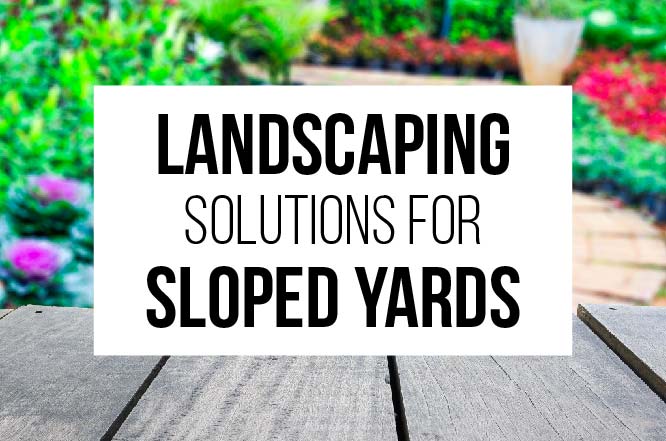Landscaping Solutions for Sloped Yards
Introduction
Landscaping a sloping yard presents a unique set of challenges. Unlike flat terrains, slopes require careful planning and consideration to ensure functionality and aesthetic appeal. There is no one-size-fits-all solution for sloping yard design due to various factors such as the severity of the slope, potential drainage issues, and budget constraints. In this blog post, we will explore a range of landscaping techniques for transforming a sloping yard into a beautiful and functional outdoor space.
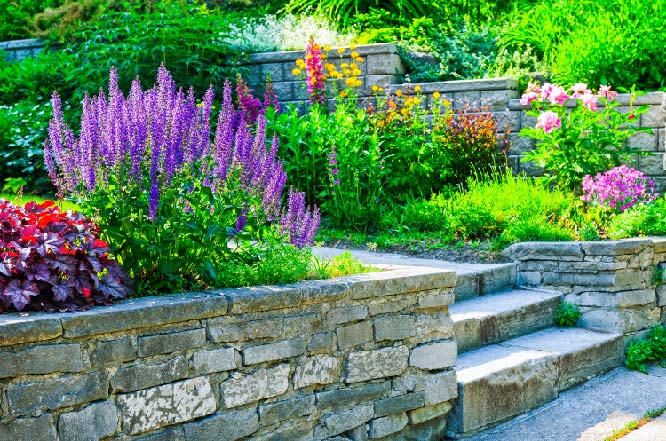
Landscaping Solutions for Slopes
Terraces
Terraces offer a visually appealing solution for a sloping yard. By creating step-down levels, they effectively mitigate runoff, preventing erosion and preserving the integrity of your landscape. This approach is perfect for yards where the goal is to prevent runoff from reaching driveways and walkways. However, it’s important to consider how you intend to use the space. While terraces are great at preventing erosion, they may not be ideal for creating a play area for children or pets.
Grading
For those seeking to maximize the functionality of their sloping yard, grading is the ideal technique. By skillfully leveling out portions of the yard, a landscaper can create additional usable space, expanding the potential of your outdoor area. However, it’s crucial to approach grading with caution. Improperly executed grading can lead to drainage issues that potentially worsen the problems it was meant to solve. In many cases, retaining walls may be necessary to ensure the success and stability of this approach.
Retaining Walls
Functional and aesthetic retaining walls serve a dual purpose in sloping yard landscaping. They hold soil in place to prevent erosion, while also contributing to the overall visual appeal of your property. When installing retaining walls, consider the choice of material, appropriate height and length, and drainage. Done correctly, retaining walls can be instrumental in transforming a challenging slope into a stunning, multi-tiered garden oasis.
Planting on Slopes
Integrating various landscaping solutions is often the key to effectively managing a slope. Groundcovers play a pivotal role in this by enhancing the effectiveness of other techniques. Whether it’s terraces, grading, or retaining walls, groundcovers act as a stabilizing force, preventing erosion and adding a layer of natural beauty to the landscape. By strategically incorporating groundcovers, you create a cohesive and harmonious design that addresses the challenges of a sloping yard and elevates its overall appeal. Opting for deep-rooted varieties is essential for effective erosion control, anchoring the soil, and resisting runoff. If a slope is difficult to navigate, selecting low-maintenance plant varieties is crucial. A thoughtful combination of plant selection and accessibility planning ensures a thriving, sustainable slope landscape.
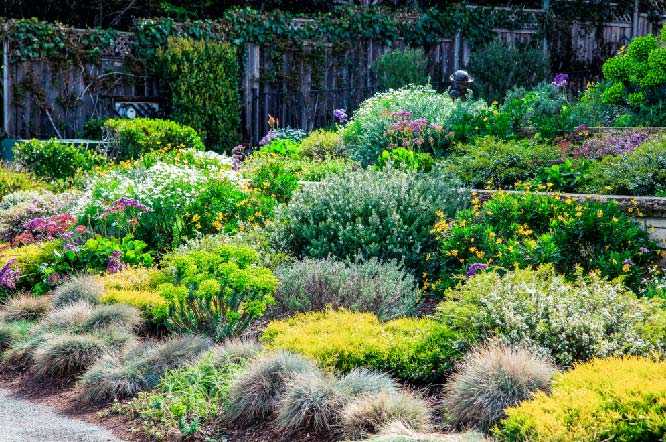
Creating Your Landscape
Making a Plan
Before beginning your transformation, it’s essential to conduct a thorough assessment of your landscape. This involves evaluating the grade of the slope, the type of soil, and the drainage conditions. Steep slopes can also be challenging to navigate, so pathways and stairs may be necessary to make regular upkeep manageable. For complex projects, consulting with landscape professionals is highly recommended. Their expertise can provide valuable insights and ensure that your vision is executed with precision. A well-thought-out plan is the cornerstone of any successful landscape project.
Selecting Suitable Plants
Selecting the right plants is important for a thriving hillside garden. Opt for varieties with deep-root systems that will anchor the soil and prevent erosion. Consider the light conditions of your slope, noting how the sun moves over the area throughout the day. To create a visually dynamic landscape, diversify your plant selection. Incorporate groundcovers, perennials, trees, and shrubs to add depth and interest to your sloping yard. Check out our list below with the top recommendations for native Virginia groundcovers.
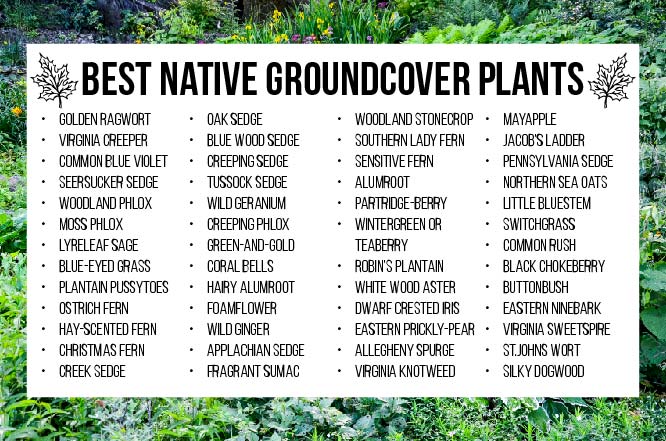
Maintaining Your Landscape
Ensuring the longevity and vitality of your sloping yard requires consistent maintenance. Start with durable materials and high-quality soil. Applying mulch helps to suppress weeds, retain moisture, and reduce the need for frequent upkeep. Opt for low-maintenance plant varieties that require minimal pruning, fertilizing, and watering. Implementing efficient irrigation, such as drip systems, ton ensure that water is distributed evenly and effectively.
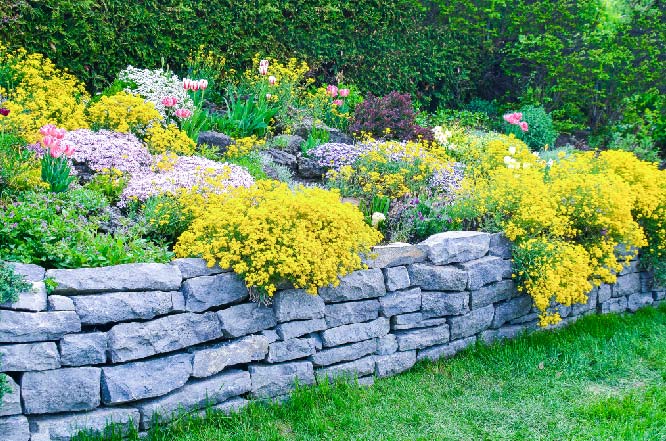
Conclusion
In conclusion, successful slope landscaping relies on making a thoughtful plan. Using groundcovers in your design is pivotal to stabilizing the terrain and adding natural, versatile beauty. Embrace the challenge of your sloping yard as an opportunity to create a unique, functional, and visually captivating outdoor space, and you’re ready for a remarkable makeover. Happy landscaping!
If you have any questions that weren’t answered or need more information, feel free to stop by and see us at either the Broad St. or Mechanicsville location. You can also give us a call or drop us an email at info@stranges.com. We’re here to help you grow better!
Connect with Strange’s:
Instagram: @StrangesRVA Facebook: @Strange’s Florist
Mechanicsville: 804-321-2200 West Broad: 804-360-2800




